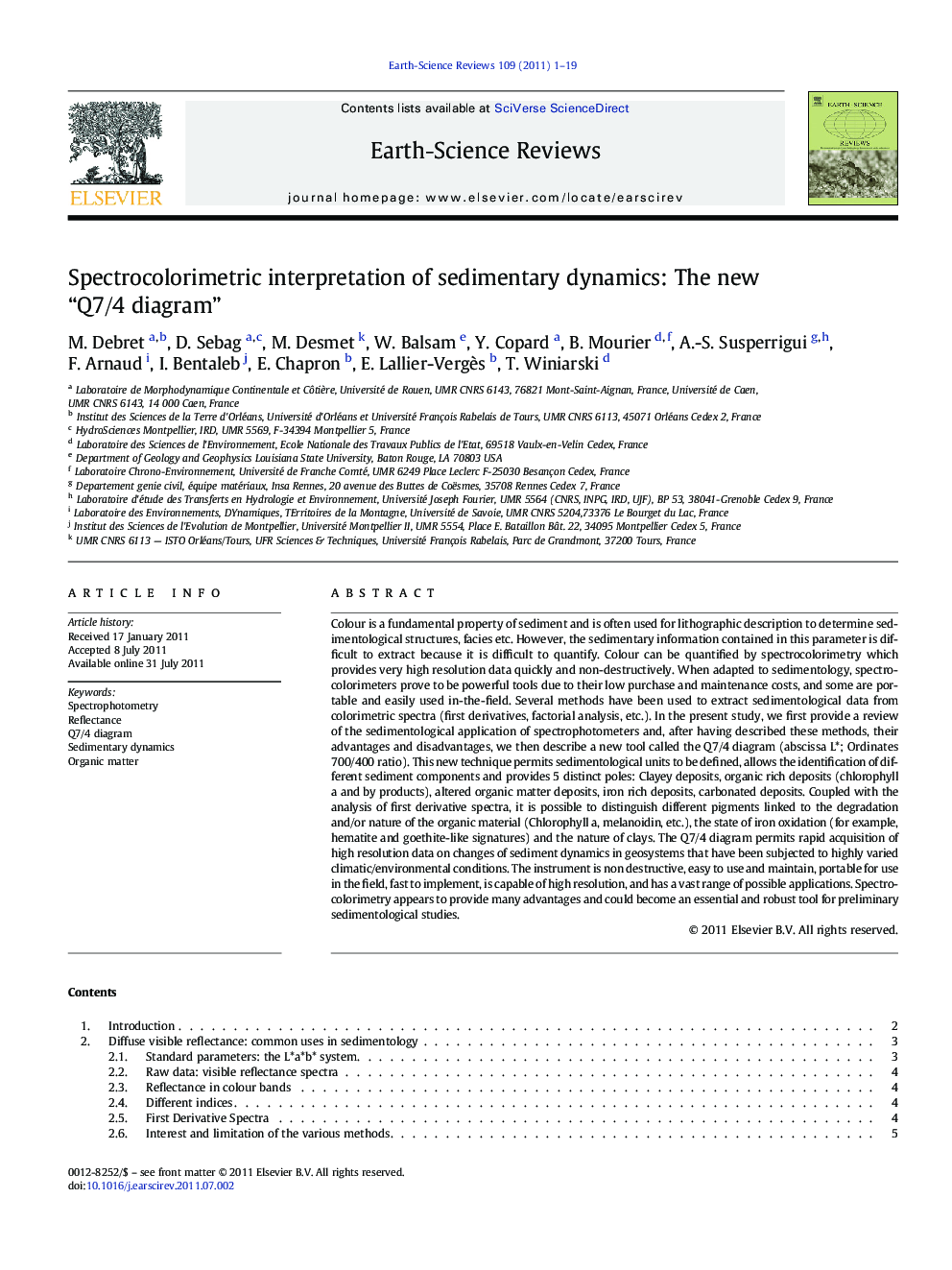| کد مقاله | کد نشریه | سال انتشار | مقاله انگلیسی | نسخه تمام متن |
|---|---|---|---|---|
| 4726025 | 1639998 | 2011 | 19 صفحه PDF | دانلود رایگان |

Colour is a fundamental property of sediment and is often used for lithographic description to determine sedimentological structures, facies etc. However, the sedimentary information contained in this parameter is difficult to extract because it is difficult to quantify. Colour can be quantified by spectrocolorimetry which provides very high resolution data quickly and non-destructively. When adapted to sedimentology, spectrocolorimeters prove to be powerful tools due to their low purchase and maintenance costs, and some are portable and easily used in-the-field. Several methods have been used to extract sedimentological data from colorimetric spectra (first derivatives, factorial analysis, etc.). In the present study, we first provide a review of the sedimentological application of spectrophotometers and, after having described these methods, their advantages and disadvantages, we then describe a new tool called the Q7/4 diagram (abscissa L*; Ordinates 700/400 ratio). This new technique permits sedimentological units to be defined, allows the identification of different sediment components and provides 5 distinct poles: Clayey deposits, organic rich deposits (chlorophyll a and by products), altered organic matter deposits, iron rich deposits, carbonated deposits. Coupled with the analysis of first derivative spectra, it is possible to distinguish different pigments linked to the degradation and/or nature of the organic material (Chlorophyll a, melanoidin, etc.), the state of iron oxidation (for example, hematite and goethite-like signatures) and the nature of clays. The Q7/4 diagram permits rapid acquisition of high resolution data on changes of sediment dynamics in geosystems that have been subjected to highly varied climatic/environmental conditions. The instrument is non destructive, easy to use and maintain, portable for use in the field, fast to implement, is capable of high resolution, and has a vast range of possible applications. Spectrocolorimetry appears to provide many advantages and could become an essential and robust tool for preliminary sedimentological studies.
► We first provide a review of the sedimentological application of spectrophotometry.
► In a second part, it’s described a new tool called the Q7/4 diagram.
► This diagram permits to identify high-resolution changes of sedimentary dynamics.
► This technique allows the identification of 5 sediment components.
► Clayey, organic rich, altered organic matter, iron rich and carbonated deposits.
Journal: Earth-Science Reviews - Volume 109, Issues 1–2, November 2011, Pages 1–19